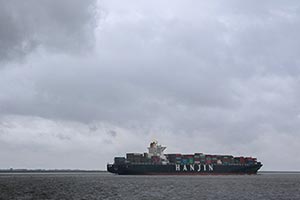Sinking Shipping Industry Eyeing Mergers to Stay Afloat

The global shipping industry is in the midst of a huge downturn, with weak demand engulfing it for the past few years. Experts acknowledge that the sector’s biggest hurdle is overcapacity, but the wave of mergers and acquisitions means the hard times will pass eventually.
The Baltic Dry Index (BDI), which is used to reflect the prosperity of the shipping industry, plummeted to a record low of 290 points in February this year. Although it rebounded slightly to reach 1,204 points on Nov. 29, it’s still well below its all-time high of 11,793 points reached on May 20, 2008.
RELATED: Maersk Line to buy German rival Hamburg Süd
“The most challenging part for the industry right now is overcapacity — too many ships being built with weak demand for seaport trade. It will take a few years for the excessive capacity to be used up,” said Maersk China Chairman Tim Smith.
Speaking at the Asian Logistics and Maritime Conference in Hong Kong, he said overcapacity and falling demand for seaborne trade have pushed freight rates to unsustainable levels in the past two years, causing billions of dollars in losses for the world’s biggest shipping companies and a near halt to orders for new vessels.
Despite an 11% growth in container volume, Maersk Line posted a loss of $116 million for the third quarter of 2016, compared with a $264-million profit in the same period last year. Average freight rates slumped 16% compared with last year.
RELATED: World’s biggest shipping company wants more mergers
After the bankruptcy of South Korea’s Hanjin Shipping and the merger of China’s two biggest shipping lines — Cosco and China Shipping — Smith anticipates more consolidation, mergers and bankruptcies in the coming year. He emphasized this will bring more stability to the market, saying the sector has been “highly fragmented” for many years.
“Consolidation is a good thing for the industry, which will, in turn, bring more stability to the market. Next year, the top seven carriers will control around 65% of the capacity,” he said.
“The situation cannot be worse, so we are cautiously optimistic that the market will be a little better in 2017.”
Although Maersk ended feeder services to 10 Chinese mainland ports this August, Smith still sees large opportunities on the mainland.
“We’re not trying to reduce our footprint in China but to optimize the efficiency of the company’s shipping network. And one of the things we hope to benefit from is the growth of e-commerce. China is leading the world in e-commerce. It’s a key place to watch,” he said.




